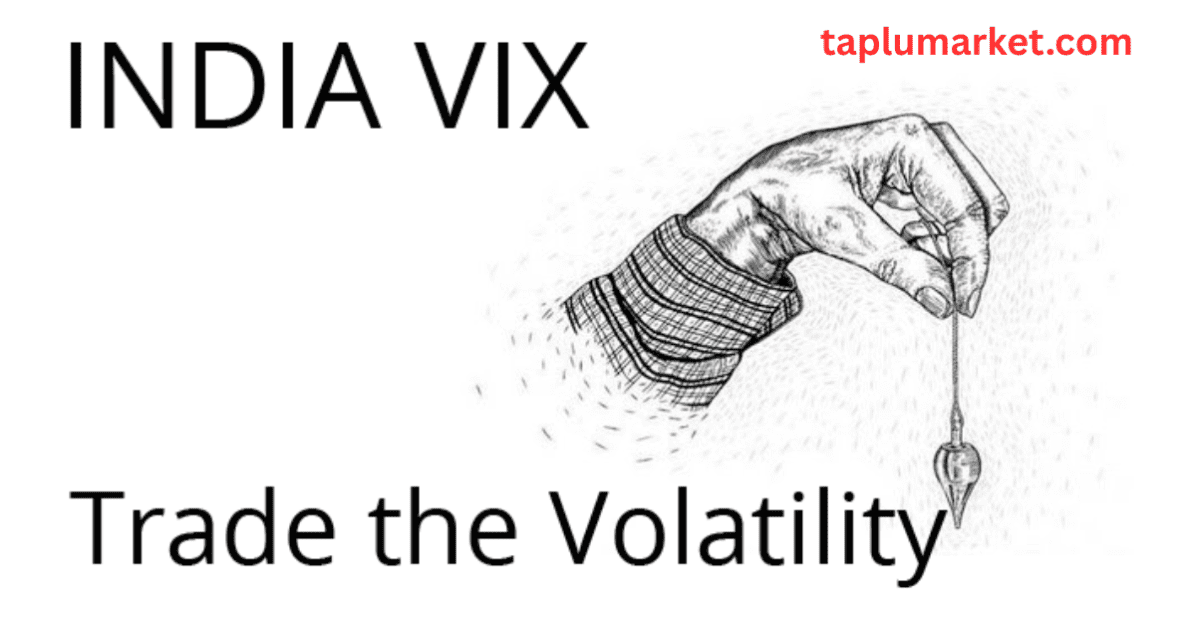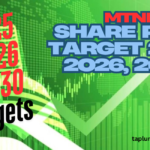The India Volatility Index, commonly known as India VIX, is a powerful tool that measures the market’s expectation of volatility over the next 30 days, derived from NIFTY 50 option prices. Often referred to as the “fear gauge,” India VIX reflects investor sentiment, spiking during periods of uncertainty and dipping in calmer market conditions. For traders, investors, and risk managers, tracking India VIX is crucial for making informed decisions—whether it’s timing trades, hedging portfolios, or assessing market risk.
However, achieving 100% accuracy in tracking India VIX is impossible due to the unpredictable nature of markets influenced by economic data, geopolitical events, and global trends. This article aims to empower you with a practical, user-friendly guide How to Track India VIX with Maximum Accuracy using reliable tools, proven strategies, and real-time insights. By understanding how to monitor this index effectively, you can gain a competitive edge in navigating the dynamic Indian stock market, optimise your trading strategies, and make smarter investment choices in 2025 and beyond.
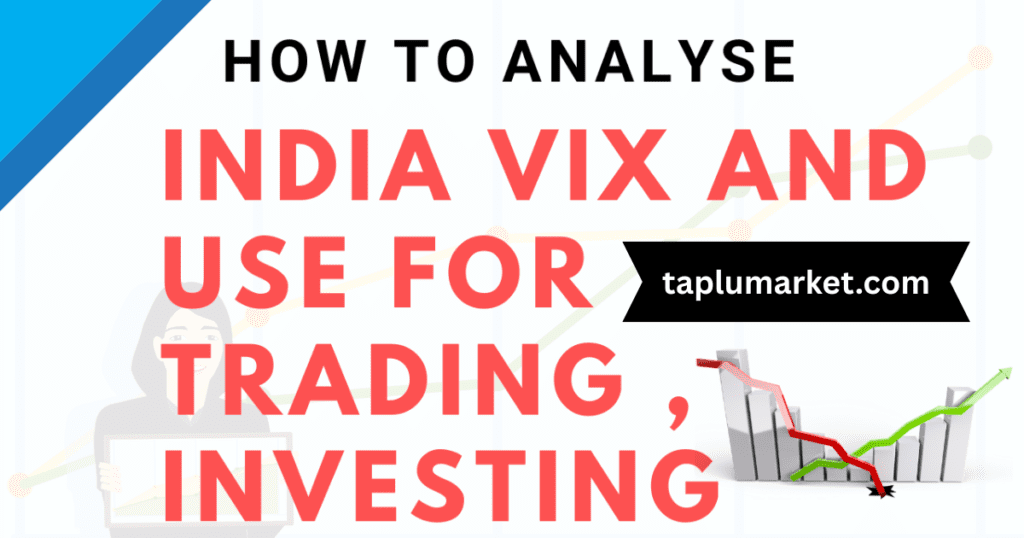
Understanding India VIX: The Key to Gauging Market Volatility
To effectively navigate the Indian stock market, understanding the India Volatility Index (India VIX) is essential for traders, investors, and risk managers alike. India VIX, often dubbed the “fear gauge,” is a critical volatility index that measures the market’s expectation of price fluctuations in the NIFTY 50 over the next 30 days, derived from the prices of out-of-the-money (OTM) NIFTY 50 options. This index rises during periods of market uncertainty, signaling heightened investor fear, and falls when markets are stable, reflecting confidence. By mastering how India VIX works, you can gain valuable insights into market sentiment, optimize trading strategies, and enhance risk management.
What is India VIX?
India VIX represents the annualized percentage of expected volatility in the NIFTY 50 index, calculated using the prices of near- and next-month OTM call and put options. A higher VIX value indicates greater anticipated market swings, while a lower value suggests calmer conditions. For example, a VIX of 20 implies an expected annualized volatility of 20%, translating to potential daily fluctuations of about 1.26% (20/√252). As a real-time indicator of investor sentiment, India VIX is a must-track metric for anyone looking to make informed decisions in the dynamic Indian market.
How is India VIX Calculated?
The calculation of India VIX is rooted in the Black-Scholes option pricing model, adapted to reflect market volatility. It uses a weighted average of OTM NIFTY 50 option prices, factoring in key variables such as strike price, market price, time to expiry, risk-free interest rate, and implied volatility. The National Stock Exchange (NSE) employs a sophisticated methodology inspired by the Chicago Board Options Exchange (CBOE) to compute India VIX, ensuring it accurately captures market expectations. While the math behind it may seem complex, understanding that India VIX reflects the cost of options—and thus market uncertainty—helps traders and investors interpret its movements effectively.
Historical Context of India VIX
Introduced by the NSE in 2008, India VIX was modeled after the CBOE’s VIX, the world’s most recognized volatility index. Since its inception, India VIX has become a cornerstone for assessing market risk in India, with historical peaks during turbulent times—like the 2008 global financial crisis (reaching 92.5) and the 2020 COVID-19 market crash (87). By studying these historical trends, investors can better contextualize current VIX levels and anticipate potential market shifts, making it a vital tool for both short-term traders and long-term investors.
Why Tracking India VIX Matters
Tracking India VIX is crucial for several reasons. First, it serves as a barometer of market sentiment, helping you gauge whether investors are fearful or optimistic. A spiking VIX often signals opportunities for options traders to capitalize on higher premiums or for investors to hedge portfolios with put options. Second, it aids in risk management by highlighting periods of heightened volatility, allowing you to adjust leverage or diversify holdings. Finally, India VIX is invaluable for timing trades—low VIX levels may indicate stable markets ideal for buying, while high levels could suggest caution or opportunities for contrarian strategies. By incorporating India VIX into your market analysis, you can make data-driven decisions, minimize risks, and seize opportunities in the ever-evolving Indian stock market.
Challenges in How to Track India VIX with Maximum Accuracy: What You Need to Know
Read More:- Bank Nifty Share Price
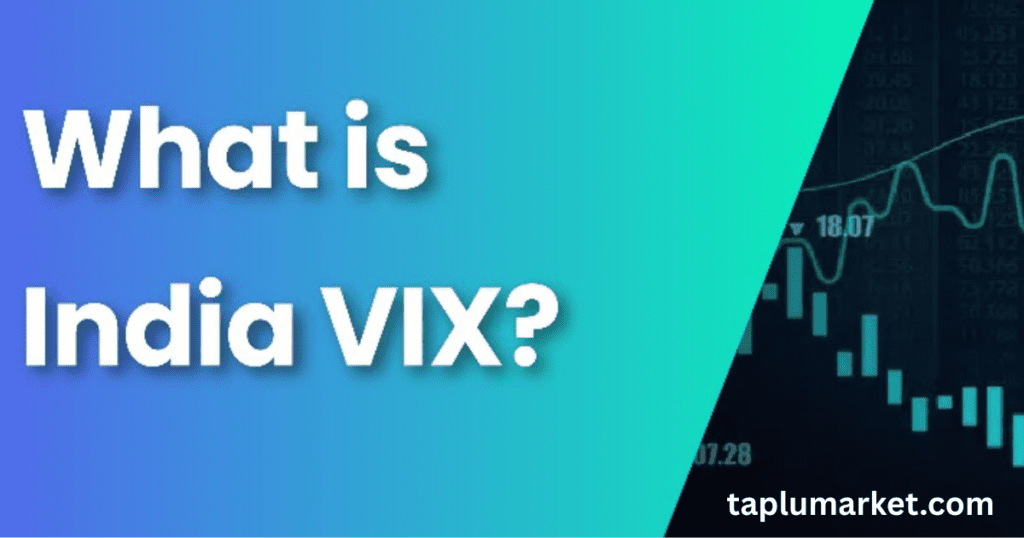
Tracking the India Volatility Index (India VIX) with precision is a goal for traders, investors, and risk managers, but it comes with inherent challenges that make achieving 100% accuracy impossible. As a key indicator of expected market volatility over the next 30 days, India VIX is influenced by a complex interplay of factors, from unpredictable market dynamics to data limitations and external events. Understanding these challenges is crucial for anyone looking to monitor India VIX effectively. This section explores the primary obstacles to tracking India VIX with high accuracy and provides actionable insights to help you navigate them, ensuring you can make informed decisions in the Indian stock market. By focusing on reliable tools and strategies, you can maximize your tracking accuracy and stay ahead in 2025’s volatile market environment.
Market Volatility: The Inherent Unpredictability
The very nature of India VIX as a measure of market volatility makes it challenging to track with pinpoint accuracy. Markets are inherently unpredictable, driven by a myriad of factors such as economic data releases (e.g., GDP growth, inflation rates), political developments (e.g., elections, policy shifts), and global events (e.g., U.S. Federal Reserve rate changes or geopolitical tensions). For instance, a sudden spike in India VIX, like the 87 level seen during the 2020 COVID-19 crash, can occur due to unexpected news, catching even seasoned traders off guard. This unpredictability means that while India VIX reflects market sentiment, its movements can be erratic, requiring you to combine real-time tracking with contextual analysis to interpret its signals effectively.
Data Limitations: Dependence on Real-Time Option Prices
India VIX is calculated using real-time prices of out-of-the-money (OTM) NIFTY 50 options, which introduces data-related challenges. Many retail investors rely on third-party platforms or brokerage apps, which may experience delays in data feeds, especially during high market activity. Even a lag of a few seconds can skew your understanding of VIX movements, particularly for intraday traders who need split-second precision. Additionally, discrepancies between data sources—such as differences in how platforms aggregate option prices—can lead to inconsistent VIX readings. To overcome this, prioritize platforms like NSE India or TradingView that offer near-real-time updates, and cross-check data across multiple sources to ensure reliability.
External Influences: News, Policies, and Global Volatility
India VIX is highly sensitive to external influences, making it susceptible to sudden shifts triggered by news events, policy changes, or global market trends. For example, a surprise RBI interest rate hike or a major geopolitical event can cause India VIX to spike rapidly, as seen during the 2008 financial crisis when it hit 92.5. Similarly, movements in global volatility indices like the CBOE VIX can spill over to India VIX, especially during periods of global economic uncertainty. These external factors add layers of complexity to tracking, as they often occur without warning. Staying informed through financial news platforms like Moneycontrol or Economic Times and monitoring global indices can help you anticipate and contextualize VIX fluctuations.
Why 100% Accuracy is Unattainable
The combination of market unpredictability, data limitations, and external influences means that tracking India VIX with 100% accuracy is simply not feasible. No tool or strategy can fully account for the dynamic and multifaceted nature of financial markets. However, this shouldn’t discourage you—by focusing on reliable tools, disciplined strategies, and continuous learning, you can achieve a high degree of accuracy that supports effective decision-making. For instance, using real-time charting platforms, setting custom alerts for VIX thresholds (e.g., above 20 for high volatility), and integrating technical analysis (e.g., moving averages, Bollinger Bands) can significantly enhance your tracking precision. The key is to accept the limitations and build a robust system to mitigate them.
Tools and Platforms for Tracking India VIX: Your Guide to Real-Time Volatility Insights
Read More:-Nifty Share Price
Monitoring the India Volatility Index (India VIX) in real-time is essential for traders, investors, and risk managers aiming to stay ahead in the dynamic Indian stock market. As a measure of expected market volatility over the next 30 days, India VIX helps you gauge market sentiment, time trades, and manage risks effectively. With numerous tools and platforms available, choosing the right one can make all the difference in achieving accurate and actionable insights. This section explores the best live chart platforms, brokerage platforms, mobile apps, and APIs for tracking India VIX, along with practical tips to select a platform that suits your needs. Whether you’re a beginner or a seasoned trader, these SEO-optimized recommendations, complete with a comparison table, will empower you to track India VIX with confidence in 2025.
Live Chart Platforms for India VIX
Live chart platforms provide real-time data and advanced visualization tools to track India VIX movements effectively. Here are the top options:
- NSE India: As the official source for India VIX data, NSE India (www.nseindia.com) offers accurate, real-time updates directly from the National Stock Exchange. It’s ideal for investors seeking raw VIX values and historical trends without third-party intermediaries. The platform also provides detailed methodology insights, making it a reliable choice for professionals. However, its interface may feel basic compared to more advanced charting tools.
- TradingView: TradingView (www.tradingview.com) is a favorite among traders for its customizable charts and robust technical analysis tools. You can track India VIX with candlestick patterns, RSI, MACD, Bollinger Bands, and over 100 indicators. Its user-friendly interface and community-driven insights make it perfect for both beginners and experts. TradingView also integrates with brokers like Zerodha for seamless trading.
- Investing.com: Investing.com (in.investing.com) offers real-time India VIX updates, historical data, and technical analysis tools, including candlestick, line, and Heiken Ashi charts. Its intuitive design and ability to compare VIX with other indices make it a go-to for investors seeking comprehensive market insights. The platform also features forums for community discussions, enhancing its value.
- Groww Terminal: Groww Terminal, part of the Groww app (www.groww.in), provides a user-friendly interface tailored for retail investors. It offers real-time India VIX data alongside NIFTY 50 updates, with basic charting tools suitable for beginners. Its clean design and integration with trading accounts make it a convenient choice for those starting out.
- Upstox: Upstox (www.upstox.com) delivers real-time India VIX tracking through its web and mobile platforms, featuring TradingView and ChartIQ charting libraries with over 100 technical indicators. Its fast execution and customizable watchlists make it ideal for active traders who need reliable VIX data alongside trading capabilities.
Brokerage Platforms for India VIX Tracking
Brokerage platforms integrate India VIX tracking with trading functionalities, making them ideal for traders who act on volatility insights. Top picks include:
- Zerodha Kite: Zerodha Kite (www.zerodha.com) is renowned for its user-friendly interface and low brokerage fees (₹20 or 0.03% per order). It provides real-time India VIX quotes, advanced charting tools, and seamless integration with trading accounts. Kite’s Varsity educational resources also help beginners understand VIX movements.
- Angel One: Angel One’s Speed Pro and mobile app (www.angelone.in) offer live VIX quotes, customizable charts, and AI-based advisory services. With zero brokerage on equity delivery and ₹20 per order for intraday/F&O, it’s a cost-effective choice for traders. Its comprehensive features cater to both novice and experienced users.
- 5paisa: 5paisa (www.5paisa.com) provides a robust platform for tracking India VIX with real-time data, TradingView charts, and a flat ₹20 per order brokerage. Its Trade Station desktop terminal and mobile app are designed for speed, making it suitable for experienced traders. The 100% paperless KYC process adds convenience for new users.
Mobile Apps for On-the-Go Tracking
Mobile apps offer flexibility for tracking India VIX anytime, anywhere. Here are the best options:
- Moneycontrol: Moneycontrol (www.moneycontrol.com) is a trusted app for real-time India VIX updates, market news, and basic charting. Its notification system keeps you informed of VIX spikes and market events, making it ideal for investors who prioritize news-driven insights. The app’s 4.5+ rating on Google Play reflects its reliability.
- Dhan: Dhan (dhan.co) is a modern trading app with free TradingView charts and real-time VIX data. Trusted by over 1 million users, it offers a user-first approach with features like instant fund transfers and customizable alerts. Its seamless integration with NSE data makes it a top choice for active traders.
- Bajaj Finserv: Bajaj Finserv’s app (www.bajajfinserv.in) provides real-time India VIX tracking alongside portfolio management tools. Its intuitive interface and focus on retail investors make it a solid option for those seeking a balance of simplicity and functionality. The app also supports IPO applications and mutual fund investments.
APIs and Data Feeds for Advanced Users
For developers and algorithmic traders, APIs and data feeds provide raw India VIX data for custom applications:
- NSE API: The NSE API (www.nseindia.com) allows developers to access real-time India VIX data directly from the source. It’s ideal for building custom trading algorithms or dashboards. However, it requires technical expertise and may involve subscription costs for high-frequency data access.
- Third-Party Data Feeds: Platforms like TradingView and 5paisa offer APIs (e.g., Xstream APIs by 5paisa) for integrating VIX data into trading systems. These are user-friendly for algo traders and provide reliable, real-time feeds with minimal latency.
Tips for Choosing the Right Platform
Selecting the best platform for tracking India VIX depends on your trading style, experience level, and goals. Here are key tips to guide your decision:
- Prioritize Real-Time Updates: Choose platforms with minimal latency, such as NSE India or Zerodha Kite, to ensure timely VIX data, especially during volatile market periods.
- Focus on User Interface: Opt for platforms like Groww or TradingView with intuitive, clutter-free interfaces to simplify analysis and decision-making.
- Ensure Reliability: Select SEBI-regulated platforms (e.g., Upstox, Angel One) with strong security measures like two-factor authentication to protect your data and investments.
- Consider Charting Tools: For technical analysis, platforms like TradingView or Upstox with advanced indicators (RSI, MACD) are essential for spotting VIX trends.
- Evaluate Costs: Look for cost-effective options like 5paisa or Zerodha with low brokerage fees to maximize returns, especially for high-frequency traders.
- Check Accessibility: Mobile apps like Dhan or Moneycontrol are ideal for on-the-go tracking, while desktop platforms like Angel One Speed Pro suit in-depth analysis.
- Explore Educational Resources: Platforms like Zerodha (Varsity) or Groww offer tutorials, making them perfect for beginners learning to interpret VIX data.
Comparison Table: Top Tools and Platforms for Tracking India VIX
| Platform | Type | Key Features | Best For | Cost | Real-Time Updates | User Rating |
|---|---|---|---|---|---|---|
| NSE India | Live Chart Platform | Official VIX data, historical trends, methodology insights | Professionals, researchers | Free | Yes | N/A |
| TradingView | Live Chart Platform | Customizable charts, 100+ indicators, community insights | Technical traders, all levels | Free (premium plans available) | Yes | 4.7/5 |
| Investing.com | Live Chart Platform | Real-time VIX data, multiple chart types, forum discussions | Investors, analysts | Free (premium plans available) | Yes | 4.5/5 |
| Groww Terminal | Live Chart Platform | Simple interface, real-time VIX with NIFTY data, trading integration | Beginners, retail investors | Free (brokerage: ₹20/order) | Yes | 4.5/5 |
| Upstox | Live Chart Platform | TradingView charts, 100+ indicators, fast execution | Active traders | Free (brokerage: ₹20/order) | Yes | 4.6/5 |
| Zerodha Kite | Brokerage Platform | Real-time VIX quotes, advanced charting, Varsity resources | Beginners, active traders | ₹20 or 0.03%/order (equity delivery free) | Yes | 4.3/5 |
| Angel One | Brokerage Platform | Live VIX data, AI advisory, customizable charts | All levels | ₹20/order (equity delivery free) | Yes | 4.5/5 |
| 5paisa | Brokerage Platform | TradingView charts, fast Trade Station, paperless KYC | Experienced traders | ₹20/order | Yes | 4.2/5 |
| Moneycontrol | Mobile App | Real-time VIX updates, news alerts, basic charting | News-driven investors | Free | Yes | 4.5/5 |
| Dhan | Mobile App | Free TradingView charts, customizable alerts, 1M+ users | Active traders, investors | Free (brokerage varies) | Yes | 4.6/5 |
| Bajaj Finserv | Mobile App | VIX tracking, portfolio tools, IPO support | Retail investors | Free (brokerage varies) | Yes | 4.4/5 |
| NSE API | API/Data Feed | Raw VIX data, ideal for custom algorithms | Developers, algo traders | Subscription-based | Yes | N/A |
Note: User ratings are based on Google Play Store/App Store averages as of April 2025. Costs and features are subject to change; verify with the platform before use.
Strategies to Maximize Tracking Accuracy for India VIX: Proven Techniques for 2025
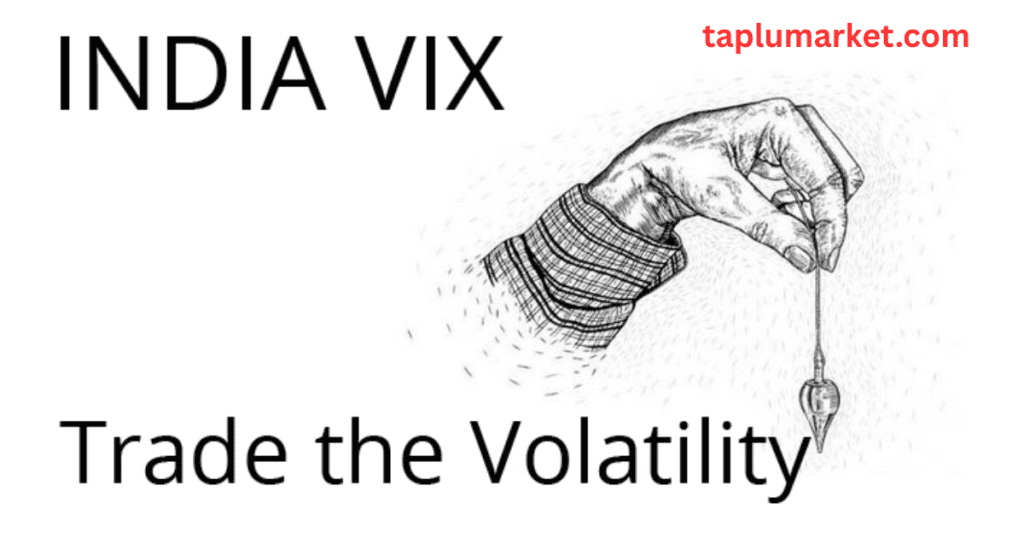
Tracking the India Volatility Index (India VIX) with high accuracy is a game-changer for traders, investors, and risk managers navigating the Indian stock market. As a measure of expected volatility over the next 30 days, India VIX provides critical insights into market sentiment, but its dynamic nature demands robust strategies to monitor it effectively. While achieving 100% accuracy is unattainable due to market unpredictability, you can significantly enhance your tracking precision by leveraging real-time monitoring, technical analysis, historical comparisons, global index cross-referencing, and news tracking. This SEO-optimized guide, packed with actionable strategies, equips you with the tools and techniques to track India VIX confidently, helping you make informed trading and investment decisions in 2025. Whether you’re timing trades or hedging portfolios, these strategies will empower you to stay ahead in the volatile Indian market.
Real-Time Monitoring: Stay Ahead with Up-to-Date Data
To track India VIX accurately, real-time monitoring is non-negotiable, as even a slight delay can skew your analysis, especially during volatile market periods. Here’s how to optimize this approach:
- Use Platforms with Minimal Latency: Choose platforms like NSE India (www.nseindia.com), TradingView (www.tradingview.com), or Zerodha Kite (www.zerodha.com) that provide near-instantaneous India VIX updates. These platforms source data directly from the National Stock Exchange, ensuring minimal lag. For example, TradingView’s tick-by-tick data feed is ideal for intraday traders who need split-second precision to act on VIX spikes.
- Set Alerts for Significant VIX Thresholds: Configure custom alerts on platforms like Upstox or Dhan to notify you when India VIX crosses key levels. For instance, a VIX above 20 often signals high volatility, indicating potential market turbulence, while a VIX below 15 suggests stability, ideal for long-term investments. Setting alerts for thresholds like 25 (extreme volatility) or 12 (low volatility) helps you react swiftly to changing market conditions without constantly monitoring charts.
By prioritizing low-latency platforms and proactive alerts, you can ensure your India VIX tracking is timely and actionable, giving you a competitive edge in fast-moving markets.
Technical Analysis: Uncover Trends and Patterns
Technical analysis is a powerful tool for identifying India VIX trends and anticipating its movements. By applying indicators and chart patterns, you can gain deeper insights into volatility dynamics:
- Apply Key Indicators: Use technical indicators like Moving Averages (e.g., 9-day or 21-day SMA) to smooth out VIX fluctuations and identify trends. For example, a rising 9-day SMA may indicate increasing volatility. Bollinger Bands help spot overbought or oversold conditions—when VIX touches the upper band, it may signal a volatility peak, while the lower band suggests calm markets. The Relative Strength Index (RSI) (e.g., 14-period) can highlight momentum; an RSI above 70 indicates overbought conditions, while below 30 suggests oversold. Platforms like TradingView and Angel One Speed Pro make it easy to apply these indicators to India VIX charts.
- Use Candlestick Patterns: Candlestick charts on platforms like Investing.com or Upstox reveal potential reversals or breakouts. For instance, a doji pattern after a sharp VIX rise may signal a reversal toward lower volatility, while a bullish engulfing pattern could indicate an upcoming volatility spike. Combining candlestick analysis with indicators like MACD (to confirm trend strength) enhances your ability to predict VIX movements accurately.
Technical analysis transforms raw VIX data into actionable insights, helping you anticipate market shifts and refine your trading strategies with precision.
Historical Comparison: Contextualize Current Levels
Understanding India VIX’s historical behavior provides critical context for interpreting its current levels and predicting future trends:
- Analyze Historical VIX Data: Study past India VIX peaks to gauge the significance of current values. For example, during the 2008 global financial crisis, India VIX soared to 92.5, reflecting extreme fear, while the 2020 COVID-19 crash saw it hit 87. By contrast, a VIX around 15–20 is typical during stable markets. Platforms like NSE India and Investing.com offer historical VIX data, allowing you to compare current levels (e.g., a VIX of 22 in April 2025) against past events to assess whether volatility is unusually high or low.
- Compare with NIFTY 50 Movements: India VIX and NIFTY 50 often exhibit an inverse correlation—when VIX rises, NIFTY 50 tends to fall, and vice versa. For instance, during the 2020 crash, VIX surged as NIFTY 50 plummeted. Use platforms like Groww Terminal to overlay VIX and NIFTY 50 charts, helping you identify patterns like VIX spikes preceding NIFTY corrections. This comparison informs whether a high VIX signals a buying opportunity (e.g., during market dips) or a need for caution.
Historical comparisons ground your VIX tracking in real-world context, enabling you to make data-driven decisions based on past market behavior.
Cross-Referencing Global Indices: Gain a Broader Perspective
India VIX doesn’t operate in isolation—global volatility indices and market trends often influence its movements. Cross-referencing provides a holistic view:
- Monitor CBOE VIX and Other Indices: The CBOE VIX, known as the U.S. “fear index,” often sets the tone for global volatility, including India VIX. For example, a spike in CBOE VIX due to U.S. economic data (e.g., inflation reports) can trigger a corresponding rise in India VIX. Track CBOE VIX on platforms like TradingView or Investing.com, and compare it with India VIX to anticipate spillover effects. Other indices, like Europe’s VSTOXX or Japan’s Nikkei Volatility Index, can also provide context during global market turbulence.
- Incorporate Global Market Trends: Global events, such as U.S. Federal Reserve rate decisions or China’s economic slowdown, can impact India VIX. For instance, a 2022 Fed rate hike led to a temporary VIX increase in India. Use platforms like Moneycontrol to monitor global market news and correlate it with VIX movements, ensuring you’re not caught off guard by external triggers.
Cross-referencing global indices enhances your understanding of India VIX’s movements, helping you anticipate volatility driven by international factors.
News and Event Tracking: Stay Informed on Volatility Triggers
India VIX is highly sensitive to news and events, making it essential to stay updated on factors that drive volatility:
- Monitor Economic Data Releases and Policy Changes: Key events like RBI interest rate decisions, GDP reports, or budget announcements can significantly impact India VIX. For example, a surprise rate cut in 2023 led to a VIX drop as markets stabilized. Use financial news platforms like Moneycontrol (www.moneycontrol.com) or Economic Times (economictimes.indiatimes.com) to track these events in real-time. Set up news alerts for terms like “RBI policy” or “India budget” to stay ahead of market-moving developments.
- Track Geopolitical and Corporate Events: Geopolitical tensions (e.g., India-China border issues) or major corporate earnings (e.g., Reliance or Infosys) can trigger VIX spikes. For instance, during the 2020 Galwan clash, India VIX rose sharply. Platforms like Dhan offer integrated news feeds, allowing you to correlate VIX movements with breaking news. Following X posts from credible financial analysts can also provide real-time sentiment insights.
By staying informed on news and events, you can better predict VIX fluctuations and adjust your trading or investment strategies accordingly.
Why These Strategies Matter
These strategies—real-time monitoring, technical analysis, historical comparison, global index cross-referencing, and news tracking—work together to maximize your India VIX tracking accuracy. They address the challenges of market unpredictability and data limitations, empowering you to interpret VIX movements with confidence. For example, combining TradingView’s real-time charts with Moneycontrol’s news alerts allows you to spot a VIX spike (e.g., from 15 to 25) and quickly assess whether it’s driven by a global event or a domestic policy shift. This holistic approach ensures you’re not just reacting to VIX data but proactively using it to optimize trades, hedge risks, or time market entries.
Practical Tips for Traders and Investors to Use India VIX Effectively
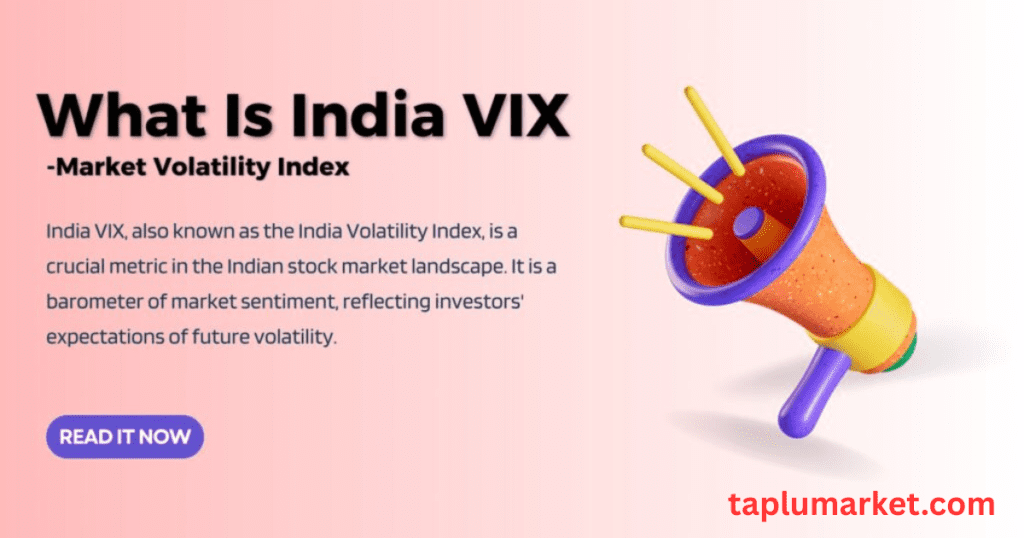
The India VIX, often referred to as the “fear gauge,” measures expected market volatility over the next 30 days based on NIFTY 50 options. For traders and investors, understanding and leveraging India VIX can enhance decision-making, manage risks, and optimize strategies. Below are practical, actionable tips tailored for intraday traders, options traders, and long-term investors, with a strong focus on risk management to ensure a balanced approach. These tips are designed to provide value to readers while being SEO-friendly, using relevant keywords like “India VIX trading strategies,” “volatility trading,” and “NIFTY risk management” to boost discoverability.
For Intraday Traders: Navigating Volatility with Precision
Intraday traders thrive on short-term price movements, but high volatility can lead to unexpected losses. India VIX is a critical tool for adjusting strategies during turbulent market conditions.
- Adjust Stop-Loss Levels Dynamically:
- Use India VIX to gauge market volatility and fine-tune stop-loss settings. A higher VIX indicates larger price swings, which can trigger premature stop-losses.
- Example: If India VIX spikes to 25 (indicating high volatility), widen your stop-loss margins by 1-2% or reduce position sizes to avoid being stopped out by normal market noise. For instance, if trading NIFTY at 24,000, a VIX of 25 suggests a potential ±25% annualized move, or roughly ±1.5% daily, so adjust accordingly.
- Pro Tip: Monitor real-time VIX updates on platforms like Zerodha or NSE to make quick stop-loss adjustments during the trading session.
- Reduce Leverage During High VIX:
- High India VIX levels signal increased risk of sharp price reversals, making leveraged positions riskier.
- Actionable Step: If VIX exceeds 20, consider lowering leverage (e.g., from 5x to 2x) to protect capital. For example, during the 2020 market crash, VIX hit 87, and traders with high leverage faced significant losses.
- SEO Keyword: “India VIX intraday trading leverage management.”
- Use VIX for Trade Timing:
- A rising VIX often precedes sharp market declines, signaling caution for long positions. Conversely, a falling VIX may indicate stabilizing markets, ideal for entering trades.
- Practical Example: If VIX jumps from 15 to 22 intraday, avoid aggressive bullish trades on NIFTY and focus on scalping or wait for a pullback. Use TradingView’s real-time VIX charts to set alerts for such spikes.
- Value for Reader: This helps traders avoid chasing momentum during volatile periods, preserving capital.
For Options Traders: Capitalizing on Volatility Shifts
Options traders can use India VIX to assess option pricing and craft strategies that align with market volatility. High VIX periods favor option buyers, while low VIX periods benefit sellers.
- Leverage High VIX for Option Buying:
- A high India VIX increases option premiums due to elevated implied volatility, making strategies like straddles or strangles more attractive for buyers expecting significant price movements.
- How It Works: In a straddle, you buy both a call and put option at the same strike price. If VIX is 25, the higher premiums reflect a larger expected NIFTY move, increasing profit potential if the market swings.
- Example: During the 2022 Ukraine crisis, India VIX surged to 30. Traders who bought NIFTY straddles profited from sharp index movements. Check historical VIX data on NSE’s website to study such events.
- SEO Keyword: “India VIX options trading strategies.”
- Sell Options During Low VIX:
- When India VIX is low (e.g., below 15), option premiums are cheaper, favoring option sellers who can collect premiums with lower risk of large price swings.
- Actionable Step: Sell out-of-the-money (OTM) calls or puts on NIFTY when VIX is stable at 12-15, as the market is likely to remain range-bound. For instance, selling a 24,500 call when NIFTY is at 24,000 and VIX is 14 can yield steady income if the market stays calm.
- Pro Tip: Use platforms like Upstox or 5paisa to analyze option chains and VIX trends before placing trades.
- Value for Reader: This empowers traders to time their option sales for maximum profitability.
- Monitor VIX for Expiry Plays:
- India VIX spikes near option expiry (e.g., weekly NIFTY expiries on Thursdays) can inflate premiums, creating opportunities for quick trades.
- Practical Example: If VIX rises to 20 before expiry, consider buying ATM options for a short-term play, as volatility often peaks around these events.
- SEO Keyword: “NIFTY options expiry VIX strategy.”
For Long-Term Investors: Hedging Against Market Downturns
Long-term investors can use India VIX to protect portfolios during turbulent periods, ensuring wealth preservation without disrupting their investment strategy.
- Hedge with Put Options During High VIX:
- A high India VIX signals potential market declines, making it an ideal time to hedge equity portfolios with put options.
- How to Implement: Buy out-of-the-money (OTM) NIFTY put options when VIX exceeds 25-30. These act as insurance, gaining value if NIFTY falls.
- Example: In March 2020, when VIX hit 87, buying OTM puts at a 10,000 strike (when NIFTY was at 11,000) would have offset portfolio losses as NIFTY crashed to 8,000. Use Moneycontrol’s VIX historical data to analyze such scenarios.
- Pro Tip: Allocate 2-5% of your portfolio to hedging during high VIX periods to balance cost and protection.
- SEO Keyword: “India VIX portfolio hedging strategies.”
- Accumulate Stocks During VIX Peaks:
- Extremely high VIX levels often mark market bottoms, presenting buying opportunities for long-term investors.
- Actionable Step: If VIX exceeds 30, start accumulating fundamentally strong stocks in phases, as fear-driven sell-offs may create undervaluation. For example, during the 2008 crisis (VIX at 92.5), investors who bought blue-chip stocks at lows saw significant gains over the next decade.
- Value for Reader: This helps investors capitalize on volatility rather than fearing it.
- Diversify to Reduce Volatility Impact:
- High VIX periods highlight the importance of diversification. Spread investments across sectors (e.g., IT, banking, FMCG) and asset classes (e.g., gold, bonds) to mitigate volatility risks.
- Practical Example: If VIX is 25 and NIFTY drops, FMCG stocks like Hindustan Unilever often remain stable, cushioning portfolio losses.
- SEO Keyword: “Diversification during high India VIX.”
Risk Management: Balancing India VIX with a Holistic Approach
While India VIX is a powerful indicator, over-reliance can lead to costly mistakes. Effective risk management involves integrating VIX with other tools and maintaining discipline to protect capital.
- Avoid Sole Reliance on India VIX:
- India VIX is non-directional, meaning it signals volatility but not the market’s direction (up or down). Relying solely on VIX can lead to misinformed trades.
- Actionable Step: Combine VIX with technical indicators like RSI, MACD, or Bollinger Bands on TradingView to confirm trends. For example, a VIX of 20 with an overbought RSI on NIFTY may signal a potential reversal.
- Value for Reader: This ensures traders make well-rounded decisions, reducing the risk of losses.
- Incorporate Fundamental Analysis:
- VIX spikes often stem from macroeconomic events (e.g., RBI rate hikes, global crises). Analyze news and fundamentals to contextualize VIX movements.
- Example: If VIX rises to 25 due to a US Federal Reserve rate hike, check how it impacts Indian sectors like IT or banking before trading. Use Moneycontrol or Economic Times for real-time news.
- Pro Tip: Set Google Alerts for keywords like “RBI policy” or “global market crash” to stay informed.
- SEO Keyword: “India VIX fundamental analysis trading.”
- Use Position Sizing to Limit Exposure:
- High VIX periods increase the risk of large losses, so adjust position sizes to stay within risk tolerance.
- Practical Example: If VIX is 30, limit any single trade to 1-2% of your portfolio to avoid significant drawdowns. For a ₹10 lakh portfolio, cap risk at ₹10,000-20,000 per trade.
- Value for Reader: This promotes disciplined trading, crucial for long-term success.
- Stay Disciplined with a Trading Plan:
- Volatility can tempt impulsive decisions. Stick to a predefined trading plan that includes VIX-based rules (e.g., no new trades if VIX > 25).
- Actionable Step: Use apps like Dhan or NiftyTrader to track VIX and set alerts for your risk thresholds, ensuring you follow your plan.
- SEO Keyword: “India VIX trading discipline.”
- Learn from Historical VIX Patterns:
- Study past VIX spikes (e.g., 2008, 2020) to understand how markets behave during volatility. NSE’s historical VIX data is a valuable resource.
- Example: In 2020, VIX peaked at 87 but dropped to 20 within months, signaling a recovery. Investors who hedged during the peak and bought during the decline profited.
- Value for Reader: Historical insights build confidence in navigating future volatility.
Common Mistakes to Avoid When Tracking India VIX
Tracking the India VIX effectively requires avoiding pitfalls that can mislead traders and investors. Below are expanded insights into the common mistakes, with actionable tips to ensure accurate and informed tracking.
1. Over-Reliance on India VIX Alone
- The Mistake: Treating India VIX as the sole indicator for market decisions can lead to incomplete analysis. VIX reflects expected volatility but doesn’t capture the full market picture.
- Why It’s Problematic:
- VIX is a derivative of NIFTY 50 option prices and may not reflect fundamental market drivers like corporate earnings or macroeconomic trends.
- It can lag behind sudden market events, such as geopolitical crises or unexpected RBI policy shifts.
- How to Avoid:
- Combine VIX with other indicators:
- NIFTY 50 Trends: Monitor NIFTY’s price action and support/resistance levels to confirm VIX signals.
- Global Indices: Track S&P 500, FTSE, or Nikkei for global market sentiment, as India VIX often correlates with international volatility.
- Advance-Decline Ratio: Use this to gauge broader market participation alongside VIX spikes.
- Use multi-indicator dashboards on platforms like TradingView or Zerodha Kite to visualize VIX alongside moving averages, RSI, or MACD.
- Combine VIX with other indicators:
- Practical Tip:
- Set up a custom TradingView chart with India VIX, NIFTY 50, and a global index like S&P 500 to spot correlations and divergences.
- Example: A rising VIX with a falling NIFTY may signal a bearish trend, but a stable global index could suggest a short-term correction rather than a crash.
2. Ignoring Market Context
- The Mistake: Interpreting high or low VIX values in isolation without considering external factors can lead to misjudgments.
- Why It’s Problematic:
- A high VIX (e.g., above 25) doesn’t always mean an imminent market crash; it could reflect temporary uncertainty, like a pending budget announcement.
- A low VIX (e.g., below 15) doesn’t guarantee stability if a major event (e.g., US Fed rate hike) is looming.
- How to Avoid:
- Stay updated on market-moving events:
- Economic Data Releases: Monitor GDP, inflation, or IIP data from sources like RBI or MOSPI.
- Policy Announcements: Track RBI monetary policy meetings or SEBI regulations via ET Markets or Moneycontrol.
- Global Events: Follow geopolitical developments or US market trends on Bloomberg or Reuters.
- Cross-reference VIX with fundamental analysis:
- Check sector performance (e.g., banking, IT) to see if VIX spikes align with specific industry trends.
- Analyze NIFTY option open interest to gauge market positioning.
- Stay updated on market-moving events:
- Practical Tip:
- Use a news aggregator app like Inshorts or set Google Alerts for keywords like “RBI policy,” “NIFTY volatility,” or “India economy” to stay informed.
- Example: If VIX jumps to 30 before an RBI rate decision, check news for clues on rate hike expectations rather than assuming a market crash.
3. Chasing Perfect Accuracy
- The Mistake: Obsessing over achieving 100% accurate VIX predictions can lead to overcomplicated strategies or paralysis by analysis.
- Why It’s Problematic:
- Markets are inherently unpredictable, and VIX is a probabilistic measure based on option prices, not a crystal ball.
- Over-optimizing models or indicators can result in curve-fitting, reducing real-world effectiveness.
- How to Avoid:
- Focus on consistency over perfection:
- Develop a repeatable tracking routine using reliable tools like NSE’s live VIX data or Sensibull’s option chain.
- Prioritize actionable insights, such as adjusting position sizes based on VIX thresholds (e.g., tighten stops when VIX > 20).
- Accept that losses are part of trading; use VIX to manage risk rather than eliminate it.
- Simplify your approach:
- Stick to 2–3 trusted indicators (e.g., VIX, NIFTY 50 SMA, Bollinger Bands) instead of overloading with complex models.
- Focus on consistency over perfection:
- Practical Tip:
- Set realistic goals, like identifying high-probability VIX trends (e.g., sustained VIX > 25 often precedes NIFTY corrections).
- Use a journal to track VIX-based decisions and review outcomes weekly to refine your strategy without chasing perfection.
4. Neglecting Historical Trends
- The Mistake: Failing to compare current VIX levels with historical data can lead to misinterpreting volatility signals.
- Why It’s Problematic:
- VIX’s normal range (15–20) varies over time, and extreme values (e.g., 30+ during 2020 COVID crash) are context-dependent.
- Without historical context, traders may overreact to minor VIX spikes or miss significant signals.
- How to Avoid:
- Study historical VIX data:
- Download NSE’s historical VIX data (available free on their website) or use Investing.com for 5–10-year charts.
- Identify key events (e.g., 2008 financial crisis, 2016 demonetization) to understand VIX behavior during stress.
- Use statistical benchmarks:
- Calculate VIX’s historical average (around 15–18) and standard deviation to gauge whether current levels are outliers.
- Example: A VIX of 25 is high but not extreme compared to 50+ during major crises.
- Incorporate historical patterns into trading:
- High VIX often precedes mean reversion; prepare for potential NIFTY recoveries after prolonged VIX spikes.
- Study historical VIX data:
- Practical Tip:
- Create a VIX heatmap using Excel or Python (e.g., with pandas and seaborn) to visualize monthly or yearly VIX ranges.
- Example: If current VIX is 22, compare it to the past 12 months to determine if it’s a significant deviation.
Conclusion:
While achieving How to Track India VIX with Maximum Accuracy is impossible due to market unpredictability, disciplined tracking, combined with technical and fundamental analysis, can significantly enhance your market insights. By avoiding common mistakes like over-reliance on VIX or ignoring context, you can make informed trading and investment decisions that align with your financial goals.
FAQs
- How accurate is India VIX?
- India VIX measures expected market volatility, not direction. It is fairly accurate in gauging fear/greed but not perfect, as extreme events can cause sudden spikes.
- How to analyse India VIX?
- High VIX (>25) = Fear, potential market bottom.
- Low VIX (<15) = Complacency, possible correction.
- Rising VIX = Uncertainty, often bearish.
- Falling VIX = Stability, often bullish.
- How to use VIX to predict the market?
- Spike in VIX: Indicates panic, possible short-term bounce.
- Low VIX: Market may be overbought, risk of correction.
- VIX & Nifty divergence: If Nifty rises but VIX also rises, caution is needed.
- What if India VIX is above 15?
- 15-20: Moderate volatility, normal market swings.
- 20-25: High volatility, possible sharp moves.
- >25: Extreme fear, potential buying opportunity.
- Is VIX bullish or bearish?
- Rising VIX: Bearish (fear increases).
- Falling VIX: Bullish (market stabilizes).
- What is the good range of India VIX?
- 10-15: Stable market (low volatility).
- 15-20: Normal volatility (healthy swings).
- >25: High risk, potential reversal.
- Difference between India VIX and NIFTY VIX?
- Both are the same; “India VIX” is the official name for Nifty’s volatility index.
- What is a good VIX number?
- Below 15: Low volatility (bullish but complacent).
- 15-20: Balanced market.
- Above 25: High fear (trading opportunity).
Disclaimer:
The advice or opinions given on Taplumarket are the personal views of the expert, the brokerage firm, the website or management is not responsible for it. Before investing, please consult your financial advisor or certified expert.
